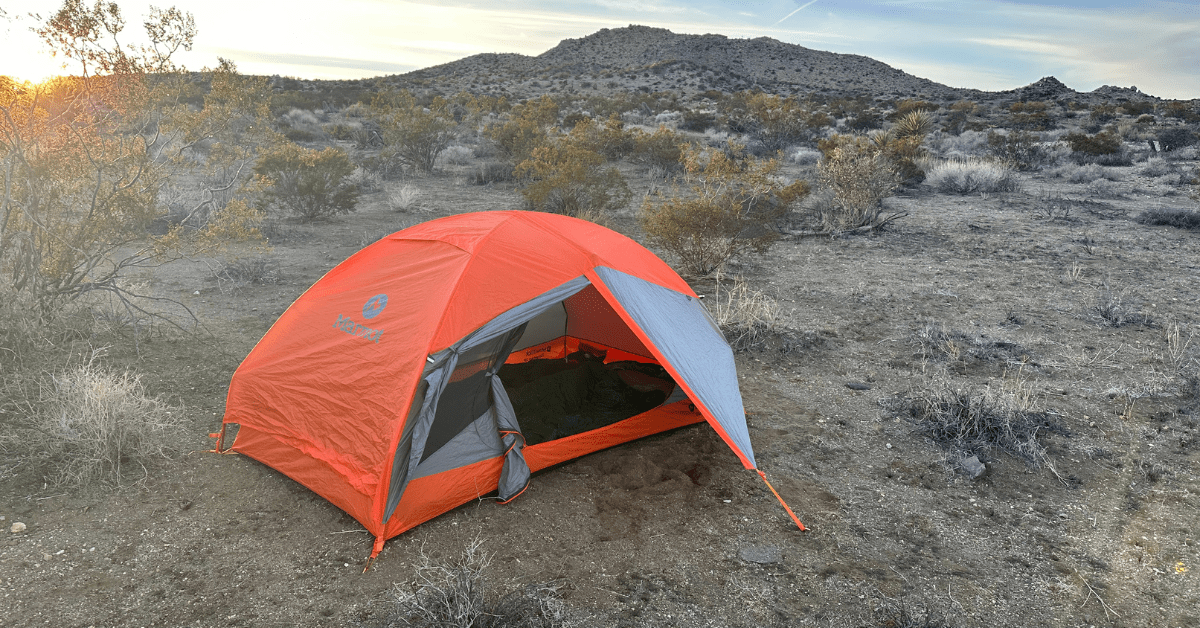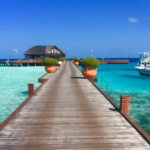Nestled amidst the stark beauty of the Mojave and Colorado Deserts, Joshua Tree National Park stands as a testament to nature’s artistry and resilience. Backpacking in Joshua Tree National Park is a great way to explore and avoid busy crowds. Fear not, for this beginner’s guide is crafted with you in mind. Now it is time to embark on this journey, and unravel the secrets of Joshua Tree, offering insights, tips, and essential knowledge to ensure your backpacking experience is as rewarding as the landscapes that await.
Trevorocity is reader-supported. When you buy through links on this site, we may earn an affiliate commission.
Getting to Joshua Tree National Park
Palm Springs International Airport is the closest to Joshua Tree National Park. That being said, it has very limited flights. American Airlines is the most common airline that flies into Palm Springs. Most visitors tend to fly into other airports to go backpacking in Joshua Tree National Park
Palm Springs International Airport is the closest to Joshua Tree National Park. That being said, it has very limited flights. American Airlines is the most common airline that flies into Palm Springs. Most visitors tend to fly into other airports to go backpacking in Joshua Tree National Park
When is the Best Time to Backpack in Joshua Tree National Park
While Joshua Tree National Park is open year-round, there are generally good times and bad times for backpacking in Joshua Tree National Park. The most ideal times are spring and fall, while many will avoid winter and summer due to weather conditions.
The fall months, spanning from October to November, usher in milder temperatures ranging between 70F and 90F, coupled with cooler nights. This season offers fewer crowds, providing a tranquil setting. My last backpacking trip to Joshua Tree National Park I visited in mid-November and while it is true the days can be a bit on the warmer side, the nights were amazing.
Spring, which covers March to May, is a favored time for many due to its pleasant daytime temperatures averaging between 75F and 85F.Beyond the comfortable climate, this season showcases the park’s renowned wildflower blooms, typically reaching their zenith in late March or early April.
Winter and summer in Joshua Tree National Park may make for a great time to visit, but not for backpacking. While winter days are comfortable the nights quickly drop to below freezing. Summer is the polar opposite, with temperatures during the day ranging into the 100’s.
Backpacking in Joshua Tree National Park
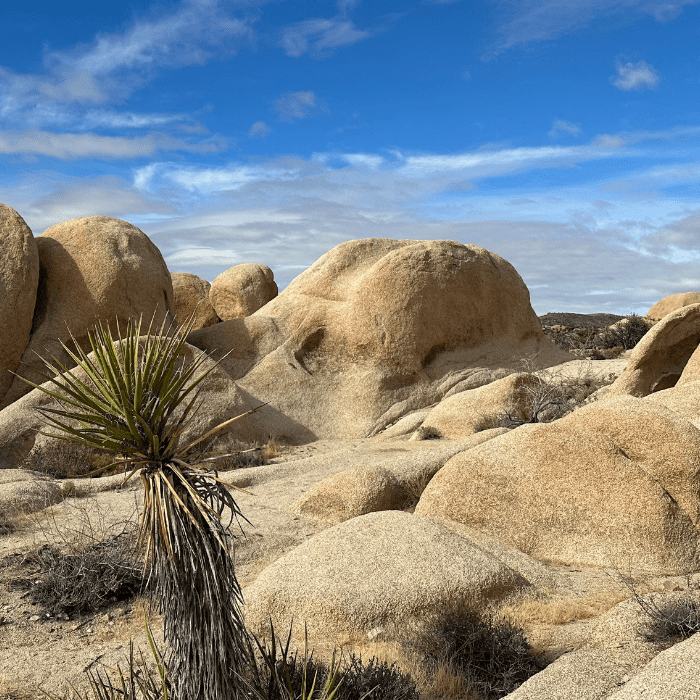
Getting your Backpacking Permit
If you plan on staying overnight in the park a permit is required. In recent years the National Park Services has started switching everything digital. Joshua Tree National Park is no different. Backpacking permits can be purchased on recreation.gov for $6 and is good for a group of up to 12.
While internet booking is probably the easiest way to get your backpacking permit, there are also a few additional ways. Calling the recreation.gov reservation line will allow you to book over the phone. Also, if you plan on making a last-minute visit there is the permit office where you can stop and pick up permits.
Backpacking in Joshua Tree National Park is open yearly, and permits are available 6 months prior. While most areas do not have limits on the number of permits allowed, holiday weekends can be busy. I would expect areas with designated campgrounds to fill up very fast.
Where to Backpack in Joshua Tree National Park
Joshua Tree National Park is broken into 15 different areas for backpacking. While all areas have reasons to visit, there are a few areas that are very popular. One of these areas is Boy Scout Trail. It draws a large number of both day hikers and backpackers for the large variety of scenery it has. From the famous Joshua Tree’s to the Wonderland of Rocks. Even if you can’t get permits to this area, it is worth the day hike.
A few of the other popular areas to backpack in are Twin Tanks, Lost Horse and Pine City. These areas are all very centralized to Joshua Tree National Park meaning that you are able to see a lot. These areas do see a lot of day hikers, but as the afternoon rolls around it will start to clear out fast.
2-day Backpacking Itinerary in Joshua Tree National Park
While I love the freedom that backpacking offers, it can be difficult to plan. I always like to include a sample itinerary I have taken myself to give some inspiration to others. You can use this as a guide for your trip, or just a reference of areas in the park you might like to visit.
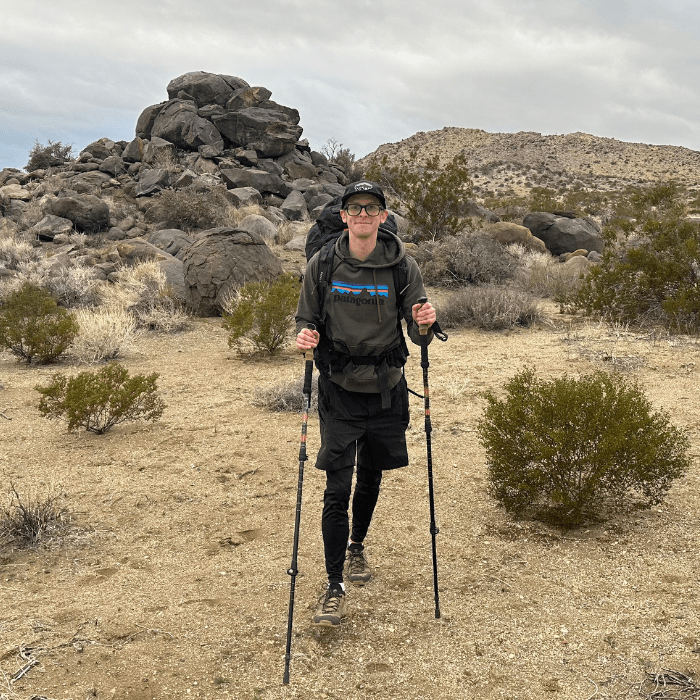
Day 1 - Backpacking Joshua Tree National Park
I was driving from Phoenix to Los Angeles to visit a friend. It was decided that I would extend my trip by a few days and do a short backpacking trip in Joshua Tree National Park. I may have procrastinated a while and only planned the trip the day before I was leaving.
I knew I wanted to do something relaxing, and I wasn’t looking to hike a crazy amount on this trip. Finally, I decided that I would camp in the Lost Horse Zone since it was central. This way I could enter from the south entrance and exit through the west entrance and continue my trip to Los Angeles. I went to recreation.gov and booked my permits for the following day.
Coming into the south entrance I made my first stop at Los Palms Oasis. This is honestly one of my favorite hikes in Joshua Tree National Park. It amazes me how with the vast barren landscape that these giant trees can grow. This is a longer hike, about 7.4 miles, so I only did about half before turning around and heading back to the car.
I made a quick stop at the visitor center, yes, I am that guy who gets a sticker. I checked in with the park ranger, although not required I just wanted to verify I had everything correct. I then started making the drive up the road. One last quick stop at the Cholla Garden before reaching the trail head.
I started unpacking about mid-day and the November temperatures were perfect. This was also my first time using my new Apple watch ultra and being able to test out the hiking functions it offered. I hiked just over 2.5 miles and found a good place to set camp.
The rest of the afternoon was time for relaxing and then finally dinner as the sun was setting. The best part of backpacking in Joshua Tree National Park? The star gazing, with such a low level of light pollution in the surrounding areas, makes one of the best places to see the clear sky.
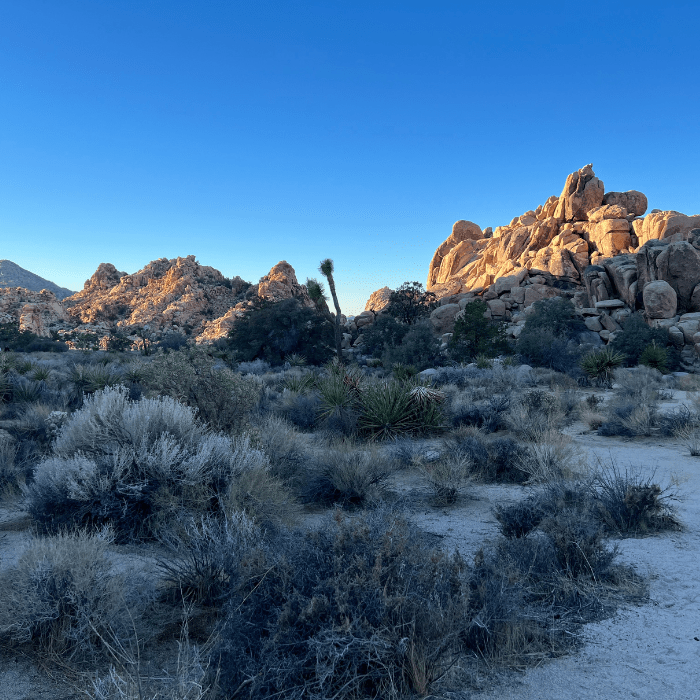
Day 2 - Backpacking Joshua Tree National Park
I was in no rush to get out early, so I stayed in my sleeping bag for a while. It can get cold overnight when the sun goes down since the desert landscape is so barren. As the sun finished rising, I started warming up and decided to get my day started. First, I made myself a quick breakfast and packed.
I hiked back out and only came across one other hiker on my way out. I loaded up my car and continued to drive to the west exit of the park. Similar to the previous day I decided to make some stops on the way out of the park.
While a bit out of the way, I made a stop at the jumbo rocks and Elephant Rock. This specific area in Joshua Tree National Park ignited my passion for backpacking. It’s the very reason I began my adventures here. The campground is always full, and I needed to find another way to camp. Anyways, I hung out here for about an hour just exploring around.
I then made one last stop at Hemmingway, an area with many rock formations. I had a quick lunch and watched a few of the rock climbers heading out. Then I made my way to the west entrance and headed on the rest of my drive to Los Angeles.
Tips for Backpacking in Joshua Tree National Park
- Remember your annual America the Beautiful Pass to get access to the park for free. If you don’t have one, you should look into investing in one. It will pay for itself if you visit a few National Parks throughout the year.
- Campsites must be at least 1 mile from any backcountry trailhead, at least ½ mile from any road and at least 200 feet from any trail.
- As long as you meet the rules above you can camp anywhere given it is suitable as a campground (avoiding historical sites, ruins, etc.). The only exception is Boy Scout Trail, where you must camp at a designated backpacking campground.
- Caching food and water is allowed. However, make sure to follow the regulations. For water, label it with your name, number and date of pickup. For food make sure it is a hard plastic container, such as a bear vault to protect wildlife.
- Do not start campfires in the backcountry! The only flames permitted are from small butane stoves for cooking.
Backpacking Packing List for Joshua Tree National Park
Feel free to download my free PDF packing list for Joshua Tree National Park. My full list is just too much information to include in this post. This is everything that I brought with me on my trip. Remember this is only a reference, please add items as needed.
Conclusion for Backpacking in Joshua Tree National Park
Embarking on a backpacking journey in Joshua Tree National Park offers a gateway to a realm of unparalleled beauty, tranquility, and wonder. From the iconic Joshua trees that stand sentinel amidst the desert expanse to the celestial ballet of stars that adorn the night sky, each moment in Joshua Tree is a reminder of the profound connections that bind us to the natural world.
Whether it’s your first backpacking endeavor or a continuation of a lifelong passion, Joshua Tree awaits, ready to unveil its timeless wonders to those willing to venture into its embrace.


